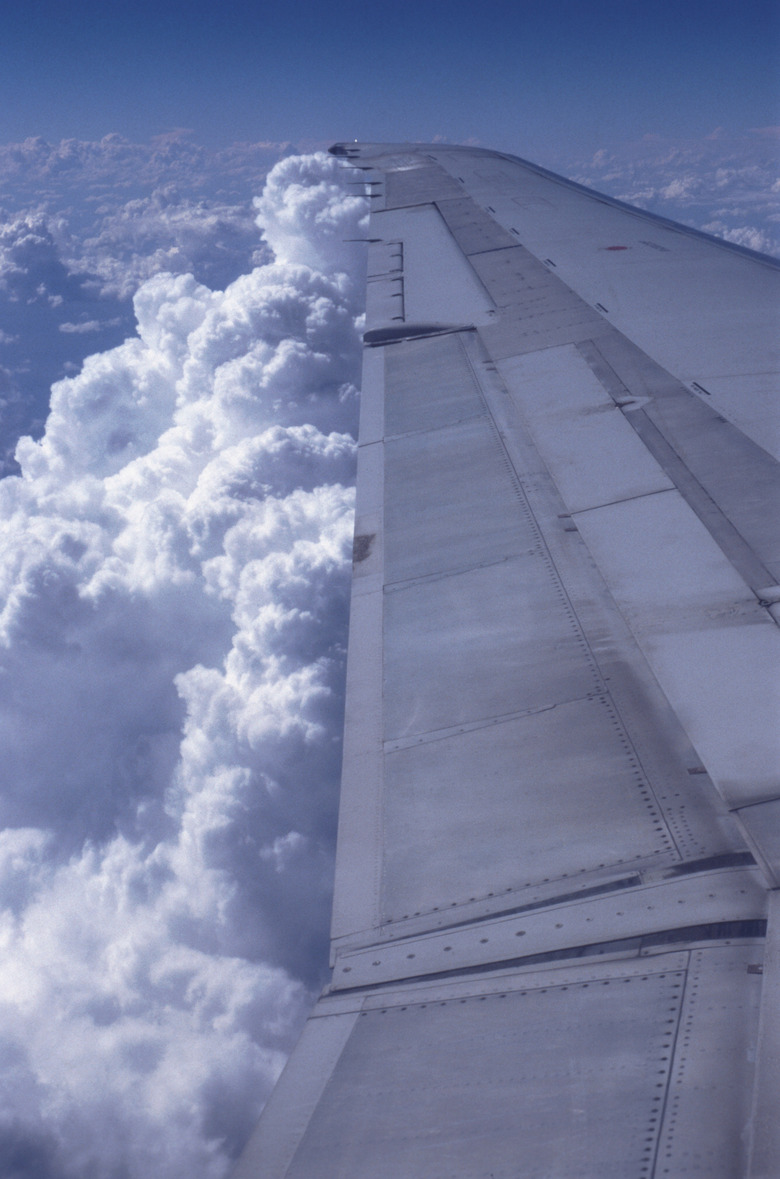How Does Pressure Relate To Fluid Flow?
Modern aviation would be impossible without aerodynamic analysis based on the fundamental principles of fluid mechanics. Though "fluid" is often synonymous with "liquid" in conversational language, the scientific concept of a fluid applies to both gases and liquids. The defining characteristic of fluids is the tendency to flow — or, in technical language, to deform continuously — under stress. The concept of pressure is closely related to the important characteristics of a flowing fluid.
The Power of Pressure
The Power of Pressure
The technical definition of pressure is force per unit area. Pressure can be more meaningful than related quantities, such as mass or force, because the practical consequences of various scenarios are often dependent primarily on pressure. For example, if you use your fingertip to apply a mild downward force to a cucumber, nothing happens. If you apply that same force with the blade of a sharp knife, you slice through the cucumber. The force is the same but the edge of the blade has a much smaller surface area, and thus the force per unit area — in other words, the pressure — is much higher.
Flowing Forces
Flowing Forces
Pressure applies to both fluids and solid objects. You can understand the pressure of a fluid by visualizing water flowing through a hose. The moving fluid exerts a force on the inside walls of the hose, and the pressure of the fluid is equivalent to this force divided by the interior surface area of the hose at a given point.
Confined Energy
Confined Energy
If pressure equals force divided by area, pressure also equals force times distance divided by area times distance: FD/AD=P. Area times distance is equivalent to volume, and force times distance is the formula for work, which in this situation, is equivalent to energy. Thus, the pressure of a fluid can also be defined as energy density: the total energy of the fluid divided by the volume in which the fluid is flowing. For the simplified case of a fluid that does not change elevation as it flows, total energy is the sum of the energy of the pressure and the kinetic energy of the moving fluid molecules.
Conserved Energy
Conserved Energy
The fundamental relationship between pressure and fluid velocity is captured in the Bernoulli equation, which states that the total energy of a moving fluid is conserved. In other words, the sum of energy due to pressure and kinetic energy remains constant even when the flow volume changes. By applying the Bernoulli equation, you can demonstrate that pressure actually decreases when fluid is traveling through a constriction. The total energy before the constriction and during the constriction must be the same. In accordance with the conservation of mass, the velocity of the fluid must increase in the constricted volume, and thus, the kinetic energy also increases. Total energy cannot change, so pressure must decrease to balance out the increase in kinetic energy.
Cite This Article
MLA
West, Joseph. "How Does Pressure Relate To Fluid Flow?" sciencing.com, https://www.sciencing.com/pressure-relate-fluid-flow-10238/. 24 April 2017.
APA
West, Joseph. (2017, April 24). How Does Pressure Relate To Fluid Flow?. sciencing.com. Retrieved from https://www.sciencing.com/pressure-relate-fluid-flow-10238/
Chicago
West, Joseph. How Does Pressure Relate To Fluid Flow? last modified March 24, 2022. https://www.sciencing.com/pressure-relate-fluid-flow-10238/
